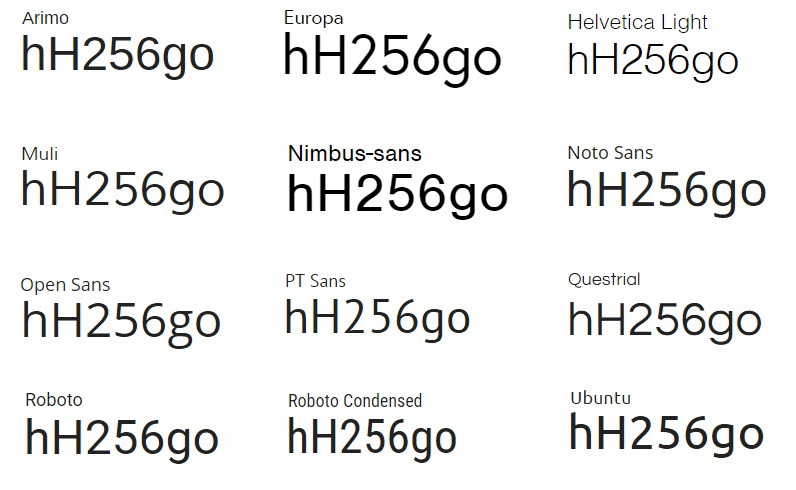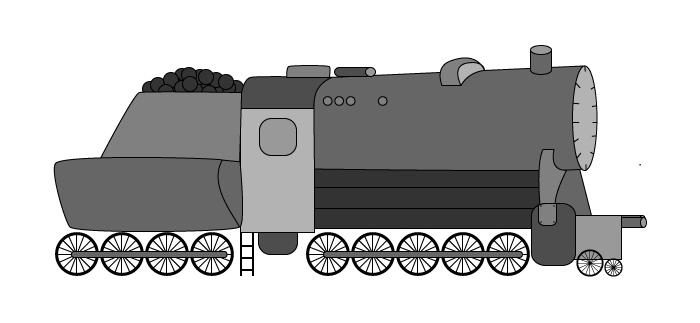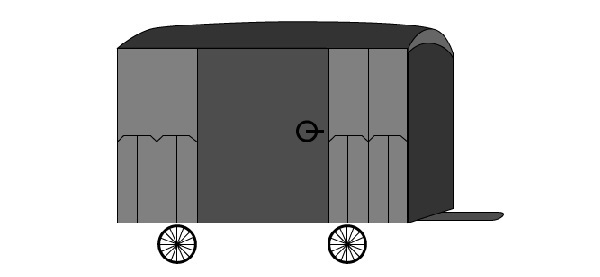2nd February 2015
Mood Board
Online mood board - https://www.pinterest.com/pigottlaura/parallax-website-the-holocaust/
Quotes
- "The only thing necessary for the triumph of evil is for good men to do nothing." - Edmund Burke
- "Those who cannot remember the past are condemned to repeat it." - George Santayana
Facts
- British forces entered the Bergen-Belsen concentration camp, near Celle, in mid-April 1945. Some 60,000 prisoners, most in critical condition because of a typhus epidemic, were found alive. http://www.ushmm.org/wlc/en/article.php?ModuleId=10005131
- On April 15, 1945, British forces liberated Bergen-Belsen. http://www.ushmm.org/wlc/en/article.php?ModuleId=10005224
- After evacuating Bergen-Belsen, British forces burned down the whole camp to prevent the spread of typhus. http://www.ushmm.org/wlc/en/article.php?ModuleId=10005224
- Of the 60,000 prisoners released from the Bergen-Belsen concentration camp, more than 10,000 of them died from the effects of malnutrition or disease within a few weeks of liberation. http://www.ushmm.org/wlc/en/article.php?ModuleId=10005131
- Janusz Korczak, director of an orphanage in the Warsaw ghetto, refused to abandon the children under his care when they were selected for deportation. He accompanied them on the transport to the Treblinka killing center and into the gas chambers, sharing their fate. http://www.ushmm.org/wlc/en/article.php?ModuleId=10005142
- in February 1945 the number of prisoners in the Bergen-Belsen camp was 22,000. As prisoners evacuated from the east (primarily from the Auschwitz camp), the camp population soared to over 60,000 by April 15, 1945. http://www.ushmm.org/wlc/en/article.php?ModuleId=10005224
- There were three main types of camps: Extermination camps, Concentration camps, Transit camps and Labour camps. http://www.theholocaustexplained.org/ks3/the-camps/types-of-camps/#.VNEs8GjkfYg
> A concentration camp is a place where people are detained or confined without trial. http://www.theholocaustexplained.org/ks3/the-camps/types-of-camps/concentration-camps/#.VNEtSmjkfYg
> A tranist camp was where people were imprisoned before being sent on to a concentration camp or deported to one of the extermination camps. http://www.theholocaustexplained.org/ks3/the-camps/types-of-camps/transit-camps/#.VNEtrWjkfYg
- Prisoners who were used for forced labour. By 1945 more than 14 million people were exploited in the network of hundreds of forced labour camps that stretched across the whole of Nazi-occupied Europe. Many of the forced labour camps were satellite camps or sections of concentration camps. http://www.theholocaustexplained.org/ks3/the-camps/types-of-camps/work-camps/#.VNEuQWjkfYg
- Auschwitz-Birkenau, the most infamous of the Nazi death camps, was a massive concentration, forced labour and extermination camp at the centre of a network of more than 40 satellite camps.
- More than 80% of those transported to Auschwitz-Birkenau were selected for immediate death. http://www.theholocaustexplained.org/ks3/the-camps/types-of-camps/extermination-camps/#.VNEuh2jkfYg
- Between 1933 and 1945 the Nazis built over 20,000 camps of various kinds. These included concentration camps, transit camps, forced labour or work camps and death camps. As prisoners were physically concentrated in one place, the Nazis called these first camps 'concentration camps'. http://www.theholocaustexplained.org/ks3/the-camps/what-are-camps/#.VNEvomjkfYg
- Camps were usually divided into sections, each separated by rows of barbed wire fences. Prisoners were housed in wooden or brick-built barracks which were intended for between 250 to 400 prisoners. However, they would often house 700 to 1200 prisoners in each. http://www.theholocaustexplained.org/ks3/the-camps/what-are-camps/how-were-camps-structured/#.VNEwpWjkfYg
- Concentration camp prisoners who were selected by the Nazis to help run the camps were known as Kapos. http://www.theholocaustexplained.org/ks3/the-camps/how-were-the-camps-run/kapos/#.VNExAmjkfYg
- Dehumanisation: Having arrived at a concentration camp and been unloaded from the cattle trucks, men and women were separated, children staying with their mothers. After registration, prisoners had to undress and have their hair shaved before showering. They usually had their own clothing taken away, which would be replaced by a striped uniform. This process was designed to remove any remnants of human dignity or personal identity. http://www.theholocaustexplained.org/ks3/the-camps/daily-life/processing-and-routines/#.VNExd2jkfYg
- In Buddhism, the swastika is a symbol of good fortune, prosperity, abundance and eternity. http://www.ancient-origins.net/myths-legends/symbol-swastika-and-its-12000-year-old-history-001312
- In Ancient Greece, Pythagoras used the Swastika under the name ‘Tetraktys’ and it was a symbol linking heaven and earth, with the right arm pointing to heaven and its left arm pointing to Earth. http://www.ancient-origins.net/myths-legends/symbol-swastika-and-its-12000-year-old-history-001312
- BBC The Story of the Swastika https://www.youtube.com/watch?v=E_reuMKpgow#t=251
- in late October 1944, Anne Frank and her mother were transferred from Auschwitz-Birkenau camp to Bergen-Belsen camp. http://www.ushmm.org/wlc/en/article.php?ModuleId=10005210
- Anne Frank died in the Bergen-Belsen concentration camp approximately 3 weeks before the prisoners there were liberated. http://www.ushmm.org/wlc/en/article.php?ModuleId=10005210
6th February 2015
Colour Studies

ParallaxWebsite001 - https://color.adobe.com/ParallaxWebsite001-color-theme-5340734/
This monochromatic colour palette is based this image, which contains a rich shade of brown, in varying tones. I like to contrast between each shade, and I think the overall drabness of the colours fits well with the theme of my website. The main thing Im aware is missing from this scheme is green and blue hues, which could come in handy if I wanted to bring in elements of sky and/or grass. 4/10
ParallaxWebsite002 - https://color.adobe.com/ParallaxWebsite002-color-theme-5348001/
This monochromatic colour palette is quite simular to ParallaxWebsite001 as far as the hues. It is loosley based on this image. I have tried to add more of a tint to the colours so that they wouldn't appear as dark, but I feel that this has resulted in too little contrast between the shades, and also has lost the dark effect I was originaly aiming for. I do like some of these colours individually though so I may add them in to a future combination if I need to. 3/10
ParallaxWebsite003 - https://color.adobe.com/ParallaxWebsite003-color-theme-5340739/
This complementary colour palette is based on this ParallaxWebsite002, with some additional blues added in for creating sky elements. Although originally I thought this would be a good idea, now that I see these colours side by side I think they look a bit too cheerful (compared to the previous two) for the topic I am undertaking. 4/10
ParallaxWebsite004 - https://color.adobe.com/ParallaxWebsite004-color-theme-5340766/
This monochromatic colour scheme is quite simular to the first two schemes I attempted, but with the shades slightly closer together. I really don't think these colours sit well together. 2/10
ParallaxWebsite005 - https://color.adobe.com/ParallaxWebsite005-color-theme-5348030/
This was an experiment to try and bring some colour into an otherwise bland monochromatic colour scheme. I think this scheme would be better suited to a beach setting, as opposed to the green, forest setting I have envisaged. 0/10
ParallaxWebsite006 - https://color.adobe.com/ParallaxWebsite006-color-theme-5340725/
This analogous colour scheme is based primarily around the greener hues of the colour spectrum. Although I like the palette on the whole, I don't think it is suitable for this particular project. The green's remind me too much of Ireland, and could be better suited to an Irish history website. 2/10
7th February 2015
10 Inforgraphic Elements
1) The liberation of the victims of the Holocaust is celebrated each year on January 27th, with this year marking the 70th anniversary. On this date in 1945, the prisioners of the Auschwitz concentration camp were released.
2) For the majority of survivors however, liberation was not attained for many more months. One such camp was Bergen-Belsen, located in Germany.
3) Between 1933 and 1945 there were over 20,000 camps built across Europe. These included Transit Camps, Concentration Camps, Labor Camps and Extermination Camps. The majority of these were sub-camps of larger ones, including Auschwitz.
4) Prisoners were transported between camps using the vast train network which spanned across Europe. The cattle cars in which they were transported had been used for transporting animals, so were unsanitary, without windows, and extremely over crowded. The journey could take up to seven days, depending on the location of the camp. Food and water were rarely provided, and due to this, alot of the victims did not survive the journey.
5) Bergen-Belsen concentration camp, which originated as a Prisioner of War camp, was converted to a concentration camp in April 1943. In the two years that followed, even though Bergen-Belsen was not used as an extermination camp and therefore contained no gas chambers, approximately 37,000 prisioners died here.
6) In late 1944 Bergen-Belsen was thought to have contained 15,000 prisoners. By April 1945, this number had risen to 60,000 due to the evacuation of prisoners from other camps around Europe. Anne Frank and her sister Margot were among the 85,000 additional prisoners who were relocated to Bergen-Belsen, when they were evacuated from Auschwitz in late 1944.
7) Anne Frank and her sister Margot died in Bergen-Belsen concentration camp in March 1945, just three weeks before the prisioners were liberated.
8) On the 15th of April 1945 British forces entered the Bergen-Belsen camp. They released 60,000 prisoners, and discovered the remains of 13,000 more. Of the 60,000 rescued, more than 10,000 of them died within a matter of weeks of liberation from malnutrition and disease due to the conditions in which they had been found.
9) As with may camps, after Bergen-Belsen was evacuated, the entire camp was burned to the ground to prevent the spread of disease (primarily Typhus).
10) An estimated 6 million people lost their lives during the Holocaust. It is estimaed that of all those who arrived to Auschwitz on the cattle cars, almost 80% were selected for immediate death. Of those who survived the selection process, many more died of disease, malnutrition and dehydration.
11) "Those who cannot remember the past are condemned to repeat it." - George Santayana
10 Background / Foreground Elements
1) Train
2) Trees
3) Mountains
4) Auschwitz camp
5) Bergen-Belsen camp
6) Train tracks
7) Sliding doors (of the carriages)
8) Fire
9) Grass
10) Rain
1) Train
2) Trees
3) Mountains
4) Auschwitz camp
5) Bergen-Belsen camp
6) Train tracks
7) Sliding doors (of the carriages)
8) Fire
9) Grass
10) Rain
8th January 2015
Typeface
I have spent alot of time looking through various typefaces, and have made some concious decisions as far as the look and style that I am going for. I want a sans serif, low contrast, medium weight font, with a vertically centered x-height, descenders that maintain the same strength as the stems the capital characters and ascenders which dont break the caps height of the typeface.
The typeface cannot be decorative, scripted or embelished in any way, as this is quite a serious subject matter, I need a strong typeface to carry it.
I also need the numerical figures to be in uppercase. This is of particular importance as alot of my infographic elements include reference to facts and figures containing numerical values.
When testing whether a typeface met these criteria I tested them with the phrase "hH256go" as this allowed me to see characters which would generally represent samples of each of the specifications I wanted to meet.
Currently, there are only a limited set of typefaces that meet these criteria in my eyes:
I have spent alot of time looking through various typefaces, and have made some concious decisions as far as the look and style that I am going for. I want a sans serif, low contrast, medium weight font, with a vertically centered x-height, descenders that maintain the same strength as the stems the capital characters and ascenders which dont break the caps height of the typeface.
The typeface cannot be decorative, scripted or embelished in any way, as this is quite a serious subject matter, I need a strong typeface to carry it.
I also need the numerical figures to be in uppercase. This is of particular importance as alot of my infographic elements include reference to facts and figures containing numerical values.
When testing whether a typeface met these criteria I tested them with the phrase "hH256go" as this allowed me to see characters which would generally represent samples of each of the specifications I wanted to meet.
Currently, there are only a limited set of typefaces that meet these criteria in my eyes:

8 Effects / Types of Parallax Movements
1) Wheels of Train Rotating
2) Mountains, Trees and grass all moving at different rates (parallax)
3) Rain Falling
4) Text fading out and being replaced by new text as it fades in
5) Doors of the train sliding shut
6) Clouds moving across the sky
7) Fire as Bergen-Belsen building disappears
8) Transition at end with patterned graphics coming in from the top left and top right
9) Number increasing from 0 to 6million as you scroll through the page to represent all the lives lost
10) For the majority of the site, the train will be stationary in the centre of the screen,
with the other elements moving so as to give the parallax effect, but at the start and end of the site,
the train will move and the background will stay still, so as to give the effect of the train pulling
away from one side of the screen and arriving at the other.
Sketches

When creating the sketches for the train, I spent some time researching what type of train would have been used at the time. The DRB Class 52 steam locomotive was one of the more common trains used to transport victims of the holocaust so I have based my graphics for the engine on this. I found this image particuarly helpful. I created the train box car based this image that I found of carriages that would have been used during the holocaust.
When I began trying to design to trees, I decided to do some research on what kind of trees would be present in the forests of Europe. The first sketches were just of general tree shapes, whereas the next two sets of trees represent a more specific range of trees that may have lined the trails of the train tracks. I found this website particuarly helpfull, and hence created trees that represented: Abies, Larix, Picea and a multitude of pine trees. This really helped direct my design desicions.
The design for the Auschwitz camp came for looking at images of the entrance through which the trains would arrive, such as this one. I tried to change the perspective so that it would be possible for the train to pull away from the building.
The design for the Bergen-Belsen camp was a bit more difficult, as I mentioned it my research, the building was burned to the ground in 1945 to prevent the spread of disease. I used images such as this one to get an idea of how it might have looked at the time.
The last image represents a rough idea of how my website will look from an overall point of view. The train will begin on the left of the screen and end at the right, with infographics and background/foreground elements being introduced along the way.
9th February 2015
Graphics - Take001

My first attempt at creating the train based on my sketches and reference imagery from my moodboard. As I have not made any definitibe decisions on the final colour scheme I am working in tonal values only, just so I can try and decipher how many shades I would need to created this particular object.
11th February 2015
Graphics - Take002

12th February 2015
19th February 2015
3rd March 2015
6th March 2015
10th March 2015
11th March 2015


